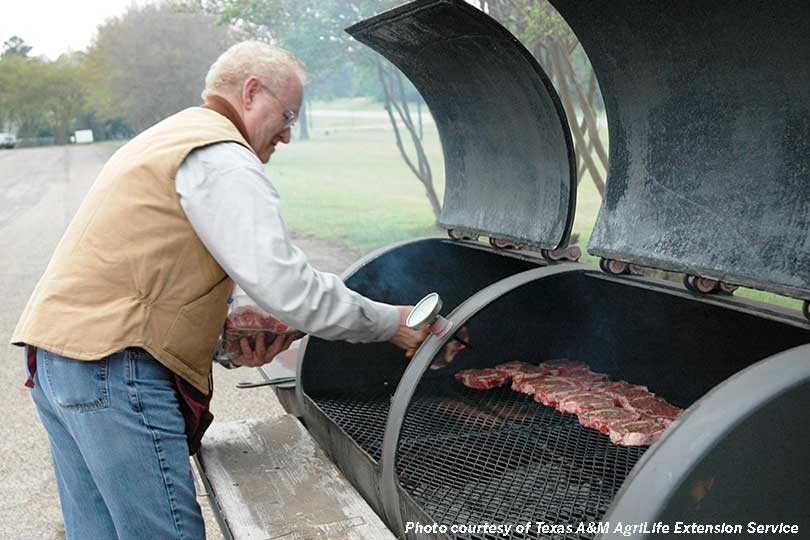Planning to grill through the remaining part of summer? Texas A&M AgriLife Extension Service offers a few tips before you fire up the grill.
“It’s extremely important that people take extra care if planning to grill outdoors, especially in open areas,” said Dr. Joyce Cavanagh, AgriLife Extension family development and resource management specialist in College Station.
Be sure to check to see if a burn ban is in effect in the area.
Some outdoor grilling tips include:
– Set up the grill on a concrete surface or on ground where grass and vegetation in the area are trimmed and where there are no dry leaves, brush, mulch piles or other combustibles in the vicinity.
– Place the grill in an open area away from deck railings, eaves and overhanging branches or other potentially combustible surfaces.
– If using a gas grill, check for leaks and make sure hose connections are tight.
– Set the grill at least 10 feet away from your house or building, and do not grill in a garage or under a carport or other surface that might catch fire.
– Keep young children and pets at least three feet from the grill.
– Remove any grease or fat buildup from the grill and/or in the trays below the grill.
— Keep charcoal fluid out of the reach of children and away from heat sources.
– Never leave the grill unattended once the fire has been lit.
– Do not attempt to move a hot grill.
– Keep a multi-purpose fire extinguisher within easy reach.
– Use flame-retardant mitts and grilling tools with long handles instead of household forks or short-handled tongs.
– When finished grilling, let the coals completely cool before disposing, and use a metal container for disposal.
– If using a propane grill, use extreme caution and always follow manufacturer recommendations for connecting or disconnecting the tank.
It’s also important to prepare food properly and maintain proper temperatures and storage when grilling.
Selecting high quality meat will help keep your food fresh longer.
When buying meat, be sure to refrigerate it as soon as possible. Poultry, fish, seafood or ground beef should be put in the freezer if you don’t plan to cook it within one to two days. Steaks or pork chops should be frozen or cooked within four to five days, according to Dr. Jenna Anding, AgriLife Extension program leader, food and nutrition, College Station.
“Also, the safest way to thaw meat or poultry is by placing it in the refrigerator a day or two before you plan to cook it, ”Anding said. “You can also thaw in the microwave, but if you do, cook the food right away. Don’t let it sit. However, some foods may not thaw out evenly and other parts of the food may be partially cooked, so it’s still better to let them thaw in the fridge.”
Ensuring all meat is cooked at the proper temperature is also important in grilling safety.
“Cook all poultry to 165 degrees, fully cooked meats like hot dogs to 165 degrees and hamburgers to 160 degrees,” Anding noted. “Beef, pork, lamb, veal steaks, chops and roasts should be cooked to at least 145 degrees. For safety and quality, however, allow these foods to ‘rest’ for three minutes after removing them from the grill before serving.”
Anding noted food should be kept hot until served and then refrigerate leftovers within one hour in warm weather.

